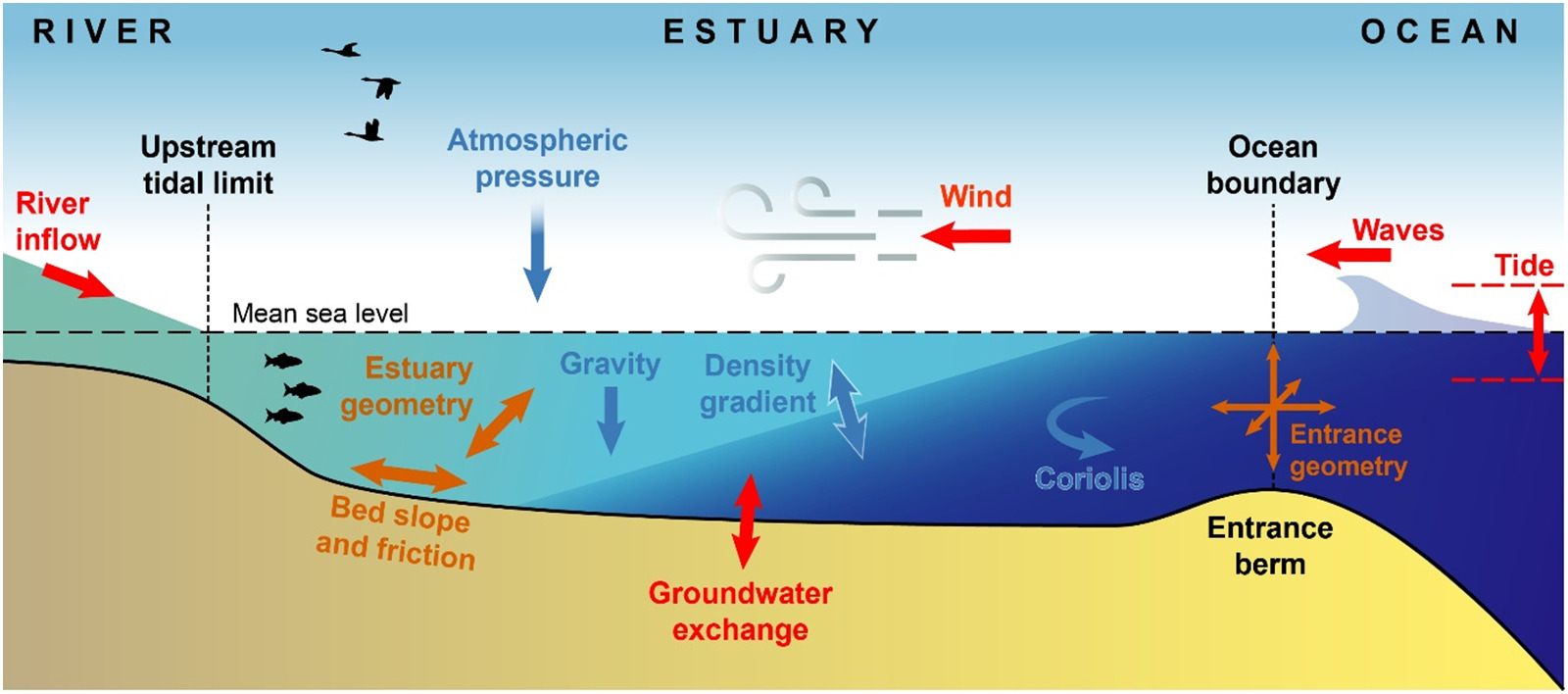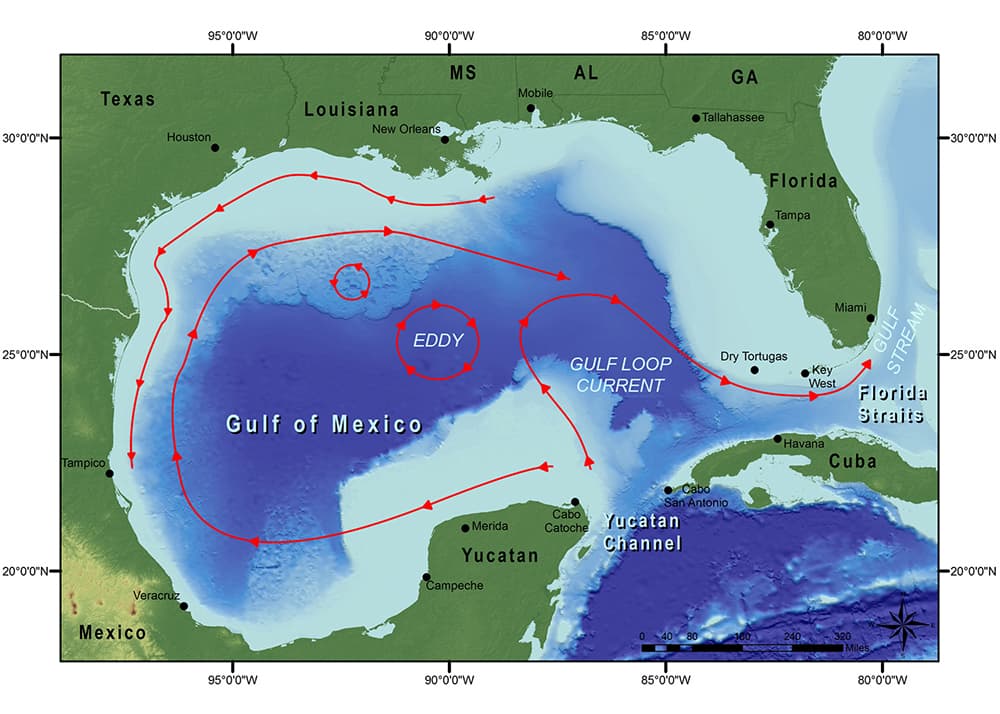The physical dynamics is the fundamental process for sediment transport, pollutant dispersion, and ecosystem. Coastal and estuarine dynamics involve a variety of processes as the coastal ocean is impacted by tides, freshwater input, and atmospheric forcings. Because of notable freshwater input, coastal and estuarine waters are typically characterized by a strong salinity gradient that drives bottom water to move from high salinity to low salinity.
In this lab, we tried to understand how the coastal and estuarine processes respond to different forcings, changing climates, sea-level rise, and extreme weather events.

(Figure source: Danial Khojasteh et al. 2021)

